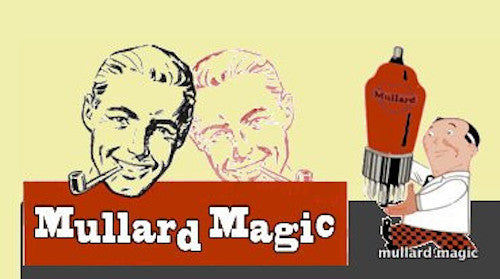
10 LITTLE PARMEKO TRANSFORMERS
Share
Don't you just love this little ditty by Parmeko from 1949

The inspiration for this advert surely comes from an American children's song dating from the 1860s - before we explain any further, woke-tard handwringers should now look away and perform some displacement activity such as having a candlelit vigil or glueing themselves to a motorway gantry...........
Here are the lyrics for this children's song: -

Songwriter Septimus Winner then created an elaborated version of the children's song, called "Ten Little Injuns", in 1868 for a minstrel show: -
Ten little Indians standin' in a line,
One toddled home and then there were nine;
Nine little Indians swingin' on a gate,
One tumbled off and then there were eight.
Eight little Indians gayest under heav'n.
One went to sleep and then there were seven;
Seven little Indians cuttin' up their tricks,
One broke his neck and then there were six.
Six little Indians all alive,
One kicked the bucket and then there were five;
Five little Indians on a cellar door,
One tumbled in and then there were four.
Four little Indians up on a spree,
One got fuddled and then there were three;
Three little Indians out on a canoe,
One tumbled overboard and then there were two
Two little Indians foolin' with a gun,
One shot t'other and then there was one;
One little Indian livin' all alone,
He got married and then there were none.
Our Agatha, went a little further and published a novel in 1939 under the title Ten Little Ni**ers. All references to "Indian" in the story were originally "Ni**er": thus the island was called "Ni**er Island" rather than "Indian Island" and the rhyme found by each murder victim was also called Ten Little Ni**ers rather than Ten Little Indians. Modern printings use the rhyme Ten Little Soldiers and "Soldier Island" for reasons of political and ethnic sensitivity. Similarly, Guy Gibson's dog's grave at RAF Conningsby has had his headstone waved over with the Woke-tard magic wand and his name shamefully changed. Probably by THEM - a passing non-binary, asexual, polyamorous relationship anarchist who is on the autism spectrum.' I wonder if at some point they may manifest themselves at my woodpile,.....
Newspaper serialisation soon followed as a twenty-three parts in the Daily Express from Tuesday, June 6 to Saturday, July 1, 1939. All of the instalments carried an illustration by "Prescott" with the first instalment having an illustration of Burgh Island in Devon which inspired the setting of the story. This version did not contain any chapter divisions.
For the United States market, the novel was first serialised in the Saturday Evening Post in seven parts from 20 May (Volume 211, Number 47) to 1 July 1939 (Volume 212, Number 1) and then published separately in book form in January 1940. Both publications used the less inflammatory title And Then There Were None. The 1945 motion picture also used this title. In 1946, the play was published under the new title Ten Little Indians (the same title under which it had been performed on Broadway), and in 1964 an American paperback edition also used this title.
British editions continued to use the work's original title until the 1980s and the first British edition to use the alternative title And Then There Were None appeared in 1985 with a reprint of the 1963 Fontana Paperback. Today And Then There Were None is the title most commonly used.
However, the original title survives in many foreign-language versions of the novel: for example,
The Greek title is Δέκα Μικροί Νέγροι;
The Bulgarian title is Десет малки негърчета;
The Spanish title is Diez negritos;
The French title is Dix petits nègres;
The Hungarian title is Tíz kicsi néger;
The Italian title, Dieci piccoli indiani,
The Dutch translation of 1981 used the work's original English title Ten Little Ni**ers;
The Russian film adaptation has the title Десять негритят (Desyat Negrityat).
The Icelandic title is "Negrastrákarnir";
the Finnish title is Kotoa ja kaukaa: valikoima runosatuja lapsille and Hupaisa laskukirja)
The Bengali poem title is "Haradhon er Dosti Chhele"
The computer adventure game based on the novel uses "Ten Little Sailor Boys".

